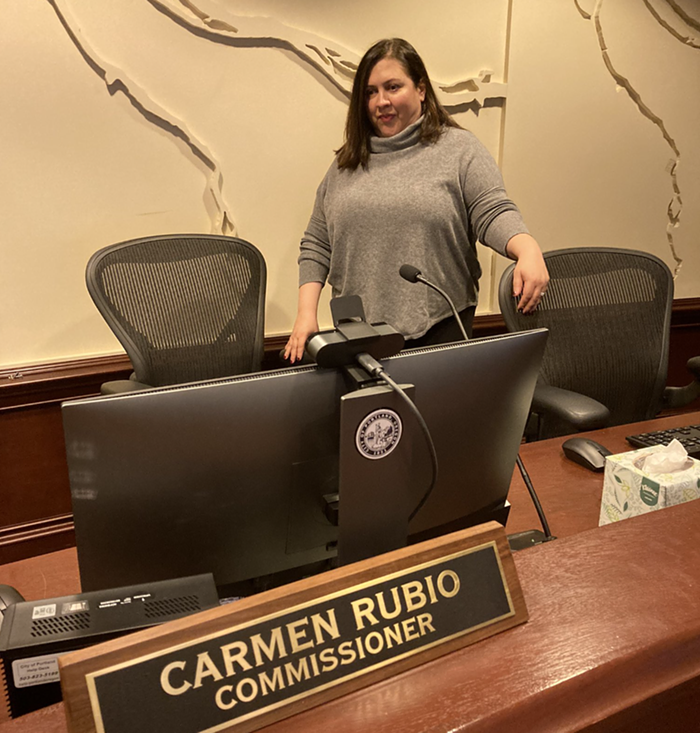BEFORE HIDDEN FIGURES, I had no idea three Black women were integral to the success of America’s space program. That’s not the only surprise here: Even the film’s title has a double meaning, referring to both the unheralded women who helped us catch up in the space race, and the calculations that were missing before their contributions.
Spending much of its runtime dealing with issues that persist today—segregation, racism and sexism in the workplace—Hidden Figures focuses on the Black women who had to balance being tenacious and docile in order to get ahead, even as they were underestimated and undervalued every step of the way. To a soundtrack that’s jazz- and soul-inspired—with songs written and produced by Pharrell Williams—we meet Mary Jackson (Janelle Monáe), the first African American female engineer at NASA. (Who knew Monáe could act!? Well, anyone who saw Moonlight, for starters—go see it!) While Monáe’s a never-failing source of comic relief, Octavia Spencer plays the super-sharp Dorothy Vaughan, who brought to NASA leadership and knowledge of mechanics and computing. And Taraji P. Henson gives a stunning portrayal of Katherine Johnson, who calculated flight trajectories, launch windows, and backup return paths for early NASA missions.
Henson’s best scene is when she returns from her daily trek to the colored women’s bathroom in a distant building—since there isn’t one in her office—and finds herself having to answer to her boss, Al Harrison (Kevin Costner) as to where she goes for 45 minutes every day. Frustrated, breathless, and rightfully irritated, Johnson manages to stay poised while explaining why something as trivial as relieving herself is such an ordeal in a segregated world. Cue Harrison’s big, heroic “I don’t see color!” moment: He finally bosses up and marches across campus with a hammer to bust through a symbolically heavy “colored ladies bathroom” sign. He declares that no longer shall they segregate the toilets at NASA, because “everyone pees the same color.” I rolled my eyes. It’s one of the few times Hidden Figures comes off as self-congratulatory: Not all whites back then were racist! Look at Kevin Costner! We eventually ended segregation!
In its subtler moments, Hidden Figures does a better job of highlighting the fact that white folk have a historical tendency to be complacent—to uphold systems of stratification without believing themselves to be prejudiced. Again and again, white characters in Hidden Figures explain, “That’s just the way it is” as they try to politely enforce segregation policies in libraries, bathrooms, and workplaces. Kirsten Dunst convincingly plays a racist bitch who, after spending much of the movie denying Vaughan promotions, expresses the sentiment in a desegregated bathroom: “You know I don’t have nothing against ya’ll.” “I know,” Vaughan casually replies. “I know you probably believe that.” It’s a moment that holds a mirror to America’s current state of racial tension: As many white people remain unwilling to admit the prejudice they’re individually perpetuating, they also go along with “the way things are”—becoming the reason things stay the way they are.
But Hidden Figures’ strongest statement is pointing out what should be obvious: that segregation and discrimination hold us all back. While this was—and remains—undoubtedly true, Hidden Figures shows how it was especially apparent at NASA. Without these women’s contributions, America’s space missions would, quite simply, not have succeeded.
In large part due to its subject matter and time frame, Hidden Figures can’t help but come across as patriotic—despite addressing America’s racial inequality, it still has a “U-S-A! U-S-A! U-S-A!” tone that, during the making of the film, probably didn’t strike anyone as odd. But with the movie being released following a racially charged election that laid bare America’s continued embrace of hatred and discrimination, Hidden Figures’ tone can’t help but feel a bit jarring. But maybe that unintended awkwardness is all the more reason to see it: In a time when many, myself included, have considered fleeing the country, these women’s contributions and legacies should be remembered.


















